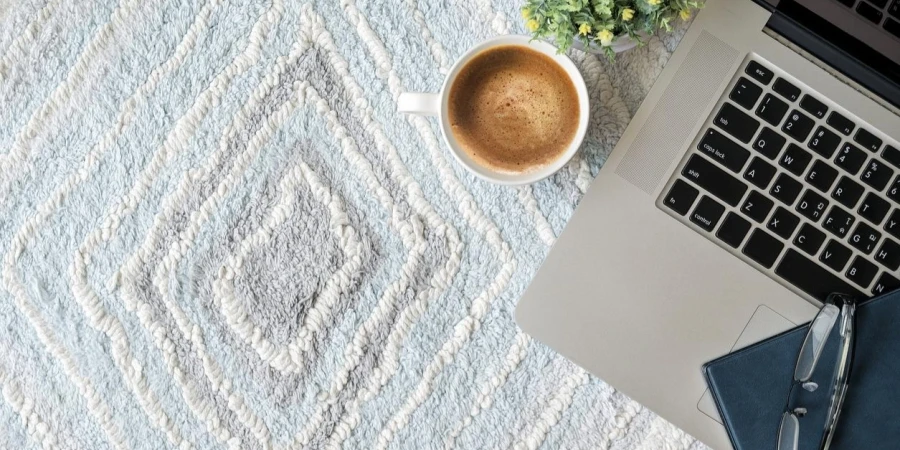Table of Contents
1. Introduction
2. Understanding the types and usage of rug pads
3. 2024 rug pad market overview and trends
4. Key factors when selecting the right rug pads
5. Top rug pads and their standout features
6. Conclusion
Introduction
Rug pads are a key accessory to area rugs, designed to provide added safety, floor protection, and comfort. By preventing rugs from slipping or bunching, they reduce tripping hazards and help maintain a clean, tidy space. Rug pads also extend the life of rugs by acting as a barrier against wear and tear, while shielding flooring from scratches and indentations caused by heavy furniture. Depending on the material, they can offer cushioning, insulation, or grip, making them a versatile solution for different environments and rug types. Whether in homes or commercial spaces, choosing the right rug pad enhances both function and durability.
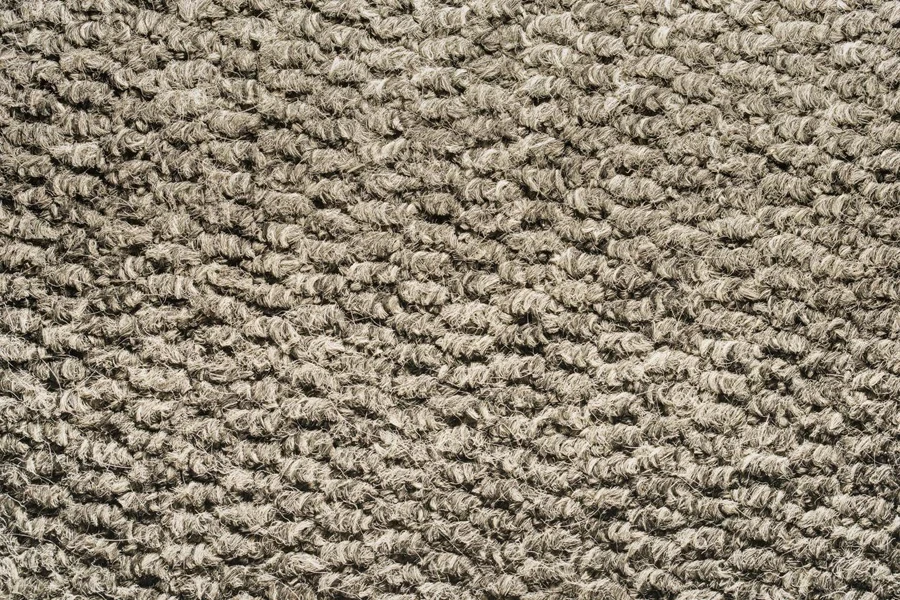
Understanding the types and usage of rug pads
Rug pads serve a vital role in enhancing the performance of area rugs, providing protection, comfort, and durability. Selecting the right type of rug pad depends on the material, the intended use, and the type of flooring. Different rug pads offer various benefits, from cushioning to grip, and understanding these differences is key to making an informed choice.
Felt and rubber pads
Felt and rubber combination pads are a popular choice because they offer both cushioning and grip, making them particularly suitable for hardwood floors. The felt layer provides a plush surface underfoot, offering comfort and noise reduction, which is ideal for busy spaces. Meanwhile, the rubber backing ensures that the rug stays firmly in place, preventing slippage and bunching. This type of rug pad is also effective in high-traffic areas where stability is important, and its dual functionality makes it versatile across different room settings.
Memory foam pads
Memory foam rug pads prioritize comfort, making them an excellent option for bedrooms or living spaces where softness is a primary concern. These pads conform to pressure, providing a cushioned feel, much like memory foam mattresses. They work well under thick or plush rugs, offering extra padding that enhances comfort. However, memory foam can compress under heavy furniture, causing indentation over time. This makes them less ideal for spaces with heavy furnishings or areas that require frequent rearranging.
PVC and synthetic pads
Rug pads made from PVC or synthetic materials are particularly useful in outdoor or moisture-prone areas such as patios or kitchens. These pads resist moisture, making them durable in environments exposed to water. However, care must be taken when using PVC pads indoors, as they can sometimes release VOCs (volatile organic compounds), which may not be suitable for enclosed spaces. Some modern PVC pads are designed with eco-friendly features, making them safer for indoor use, but it’s important to ensure they won’t damage the flooring.
Thin, non-slip pads
Thin, non-slip pads are ideal for low-profile rugs or spaces where added height is not desirable. These pads focus on providing grip without significant cushioning, making them perfect for areas with heavy furniture where stability is key. Their low thickness allows them to be easily concealed under rugs while still preventing slipping. They are especially useful in dining rooms or office spaces where furniture might cause the rug to shift.
2024 rug pad market overview and trends
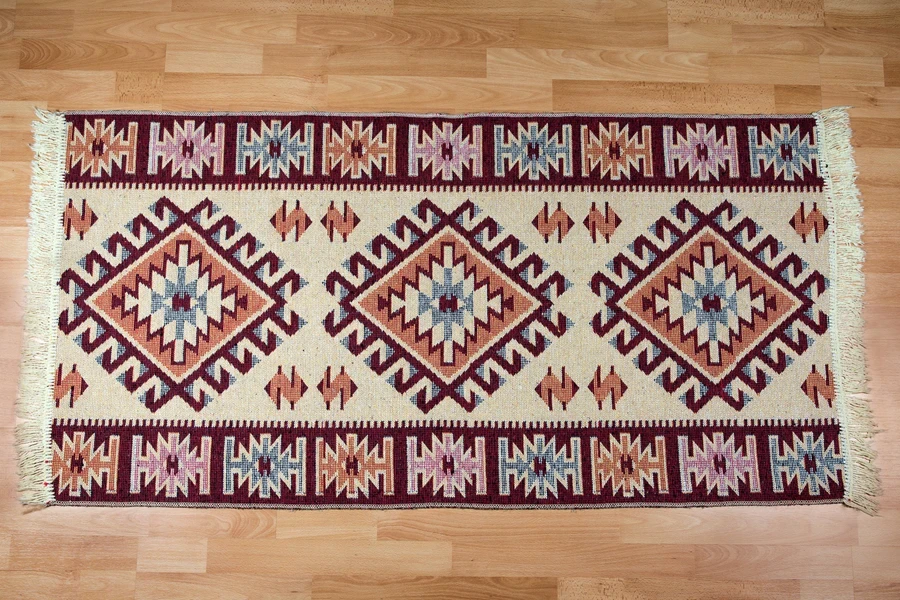
The rug pad market in 2024 is experiencing significant growth, shaped by key consumer trends that prioritize comfort, safety, and environmental responsibility. As the global rug market, valued at USD 37.58 billion in 2023, is projected to reach USD 52.18 billion by 2030, with a CAGR of 4.8%, the demand for rug pads has risen in parallel. This is driven by a growing preference for multi-functional products that cater to various needs, particularly in high-traffic areas like living rooms and hallways.
Growing demand for multi-functional pads
In 2025, multi-functional rug pads are highly favored for their blend of comfort, safety, and versatility, meeting the demands of modern residential and commercial spaces. Hybrid pads that combine felt and rubber have become particularly popular due to their dual benefits of cushioning and strong grip on various floor surfaces like hardwood and tile. These pads go beyond basic floor protection by insulating noise, reducing wear on rugs, and preventing slippage in high-traffic areas. This trend reflects a growing preference for products that enhance safety while also adding value through improved comfort and durability, especially in spaces with frequent foot traffic.
Increased focus on sustainable materials
Another key trend reshaping the rug pad market is the growing emphasis on sustainability. As more consumers become environmentally conscious, there is a strong push for eco-friendly rug pads made from natural and recycled materials. Products featuring natural rubber, recycled fibers, and organic compounds are increasingly replacing conventional options made from synthetic latex or PVC. This shift is in response to rising concerns over indoor air quality, as eco-friendly rug pads significantly reduce the release of harmful chemicals, such as volatile organic compounds (VOCs).
Brands are capitalizing on this trend by highlighting the eco-conscious attributes of their rug pads, often marketing products made entirely from recyclable materials. For instance, rug pads made from felt or natural rubber offer a green alternative while maintaining durability and functionality. These products resonate particularly with consumers focused on reducing their environmental footprint, as they offer a blend of performance and responsibility without compromising on quality or safety.
As demand for sustainable products grows, many companies are exploring innovations in material sourcing and production methods to meet consumer expectations for eco-friendly solutions. This focus on sustainability is expected to continue influencing product development and consumer preferences, with an increasing number of options that align with the values of environmentally conscious buyers.
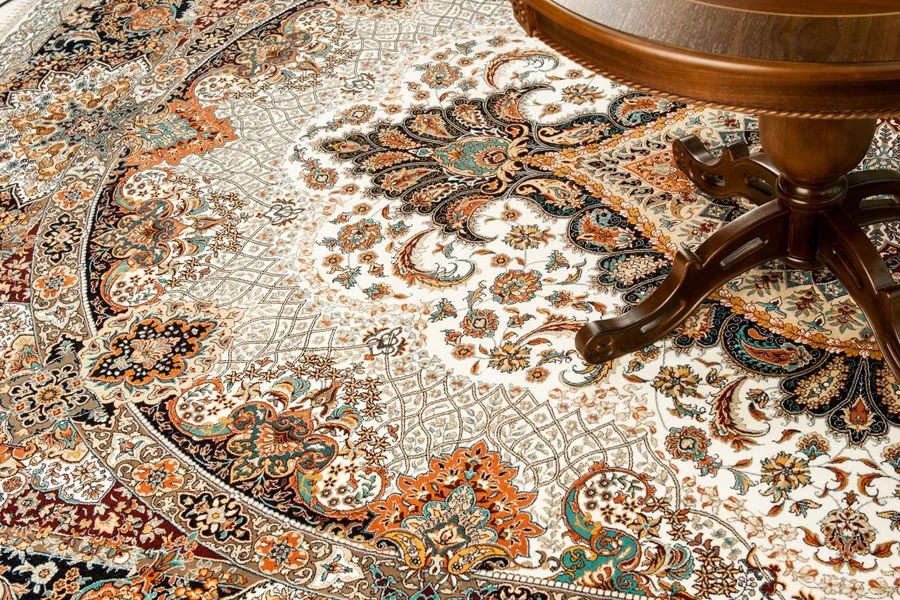
Key factors when selecting the right rug pads
When choosing rug pads for various environments, selecting the right type involves several critical considerations. The compatibility of the pad with the flooring, the rug’s size and weight, and the long-term durability and maintenance requirements all play an important role in ensuring the best performance of both the rug and the pad.
Flooring type compatibility
The compatibility of rug pads with different flooring types is a top priority when making a selection. Rubber-backed pads are particularly well-suited for hardwood floors as they prevent slippage while protecting the surface from scratches or other damage. Rubber’s non-slip quality ensures that the rug stays firmly in place, which is essential in high-traffic areas or where safety is a concern. On the other hand, memory foam pads are a better option for areas where comfort is more important, such as in bedrooms or living rooms. Memory foam provides excellent cushioning but may not offer the same grip as rubber, making it less suitable for floors that are prone to slipperiness, like tiles or smooth surfaces.
Additionally, pads with felt or a felt-rubber combination work effectively across a wide range of flooring types, including hardwood, laminate, and tile. Felt pads are ideal for areas where noise insulation or added comfort is required, while the rubber element helps secure the rug in place. Considering the floor type ensures that the rug pad will not damage the flooring and will meet the practical needs of the space.
Rug size and weight
The size and weight of the rug also influence the choice of rug pad. Heavier rugs, particularly large area rugs, benefit from thinner rug pads. A thinner pad ensures that the rug maintains stability, reducing the chances of movement without adding unnecessary height. In contrast, smaller or lightweight rugs often require thicker pads to provide sufficient cushioning and to prevent them from slipping, especially in low-traffic areas or spaces where comfort underfoot is important.
Rug thickness is another factor to consider. Low-pile rugs can typically use thinner pads, as the primary goal is to prevent slippage. In contrast, high-pile or plush rugs might require thicker pads to balance out the height difference and maintain a smooth surface. Choosing a pad that matches the rug’s size and weight ensures not only safety but also comfort and ease of use.
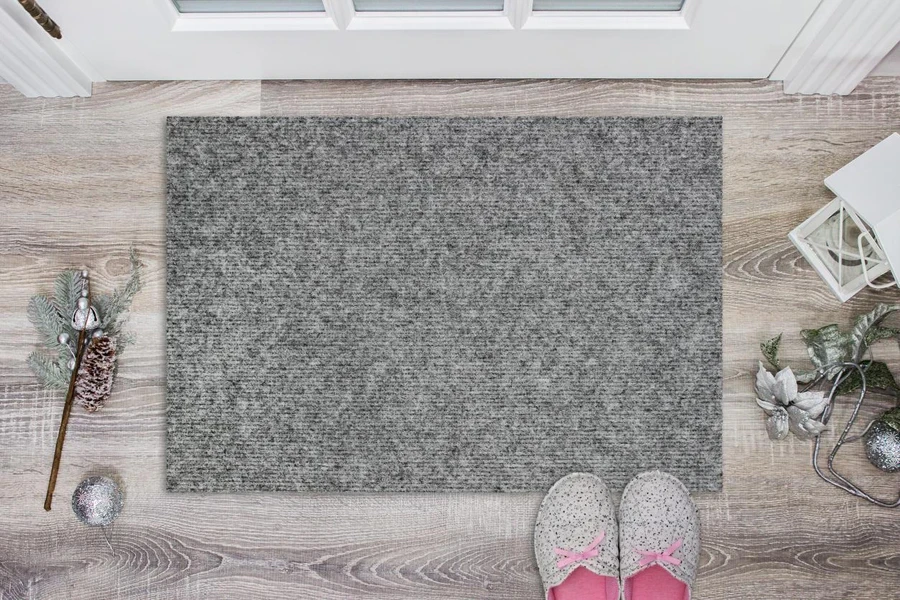
Durability and maintenance
Long-term durability is a critical factor when selecting rug pads. Materials like felt and rubber are known for their resilience and ability to withstand wear over time, making them suitable for high-traffic areas. These pads maintain their structural integrity and continue to provide protection to both the rug and floor. Felt, in particular, has excellent durability, while rubber adds the benefit of maintaining grip. Together, these materials offer a practical solution for areas that experience constant use.
However, memory foam pads may require more care and maintenance. While they offer superior comfort and cushioning, their structure can degrade over time, especially in areas with heavy furniture that may leave indentations. Memory foam is also more susceptible to collecting dirt and moisture, which can lead to hygiene concerns if not cleaned regularly. Therefore, it’s important to consider the ease of cleaning and long-term performance of the rug pad material to ensure it aligns with the intended use of the space.
Top rug pads and their standout features
When it comes to choosing the right rug pad, several options stand out for their specific features, catering to different needs and environments. Below are three highly regarded rug pads that offer excellent functionality and durability across various flooring types and room settings.
Loloi-Grip Rug Pad
The Loloi-Grip Rug Pad is celebrated for its superior grip and versatility. This pad works exceptionally well across a variety of flooring surfaces, including hardwood, tile, and carpet, making it a versatile choice for different environments. Its non-slip properties ensure that rugs stay securely in place, reducing the risk of movement or bunching. This feature is particularly beneficial in high-traffic areas, such as hallways or entryways, where safety is a priority. Despite its effectiveness, the Loloi-Grip is also affordable, making it a cost-effective solution for those looking for both performance and value.
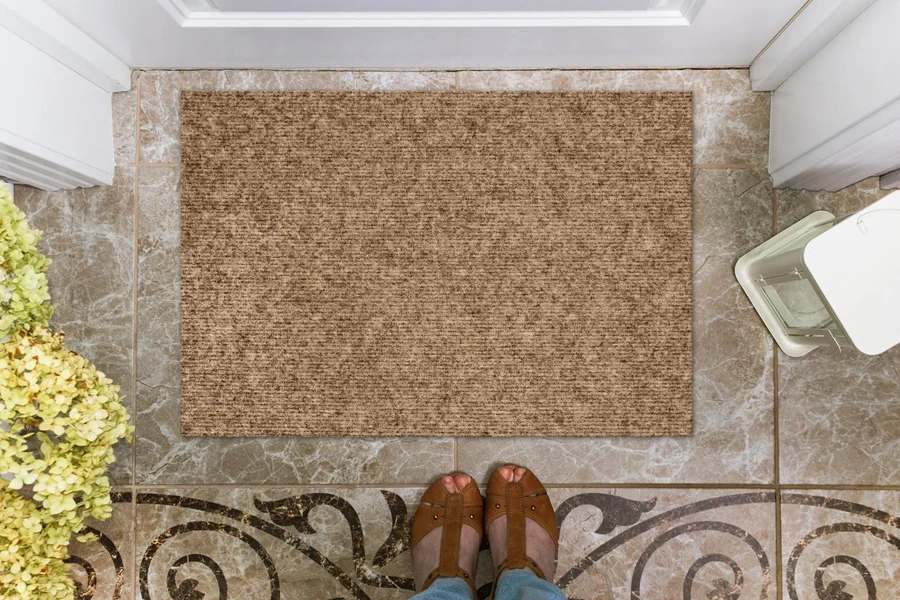
RugPadUSA Cloud Comfort Memory Foam Pad
The RugPadUSA Cloud Comfort Memory Foam Pad is a premium option designed for areas where comfort is a priority. With its thick yet firm memory foam structure, this pad offers plush cushioning that enhances the overall feel of any rug. It’s especially well-suited for bedrooms and nurseries, where barefoot walking is common. The superior cushioning not only provides a soft underfoot experience but also offers sound insulation, making it ideal for quieter spaces. Although it may not offer the same level of grip as rubber-backed pads, its luxurious comfort sets it apart as a top choice for comfort-focused settings.
nuLOOM Brody Eco-Friendly Non-Skid Rug Pad
For those seeking an environmentally conscious option, the nuLOOM Brody Eco-Friendly Non-Skid Rug Pad is a standout. Made from recycled materials, this pad appeals to buyers prioritizing sustainability without sacrificing functionality. It provides a good balance between grip and minimal cushioning, making it ideal for use under low-profile rugs in rooms with heavy furniture, such as dining areas or living rooms. The recycled material construction not only reflects a commitment to environmental responsibility but also ensures durability and long-term use. This rug pad’s blend of sustainability and performance makes it a smart choice for both eco-conscious buyers and those seeking reliable floor protection.
Conclusion
Rug pads are more than just a supporting accessory; they play a vital role in improving safety, comfort, and extending the life of area rugs. As 2025 sees increasing demand for sustainable and multi-functional products, selecting the right rug pad depends on factors like material, thickness, and intended use. With innovations in hybrid designs and eco-friendly options, choosing a rug pad that aligns with both functionality and environmental responsibility ensures that spaces not only look better but also stay protected over time. Staying updated on trends and top models helps companies make informed stocking decisions.
